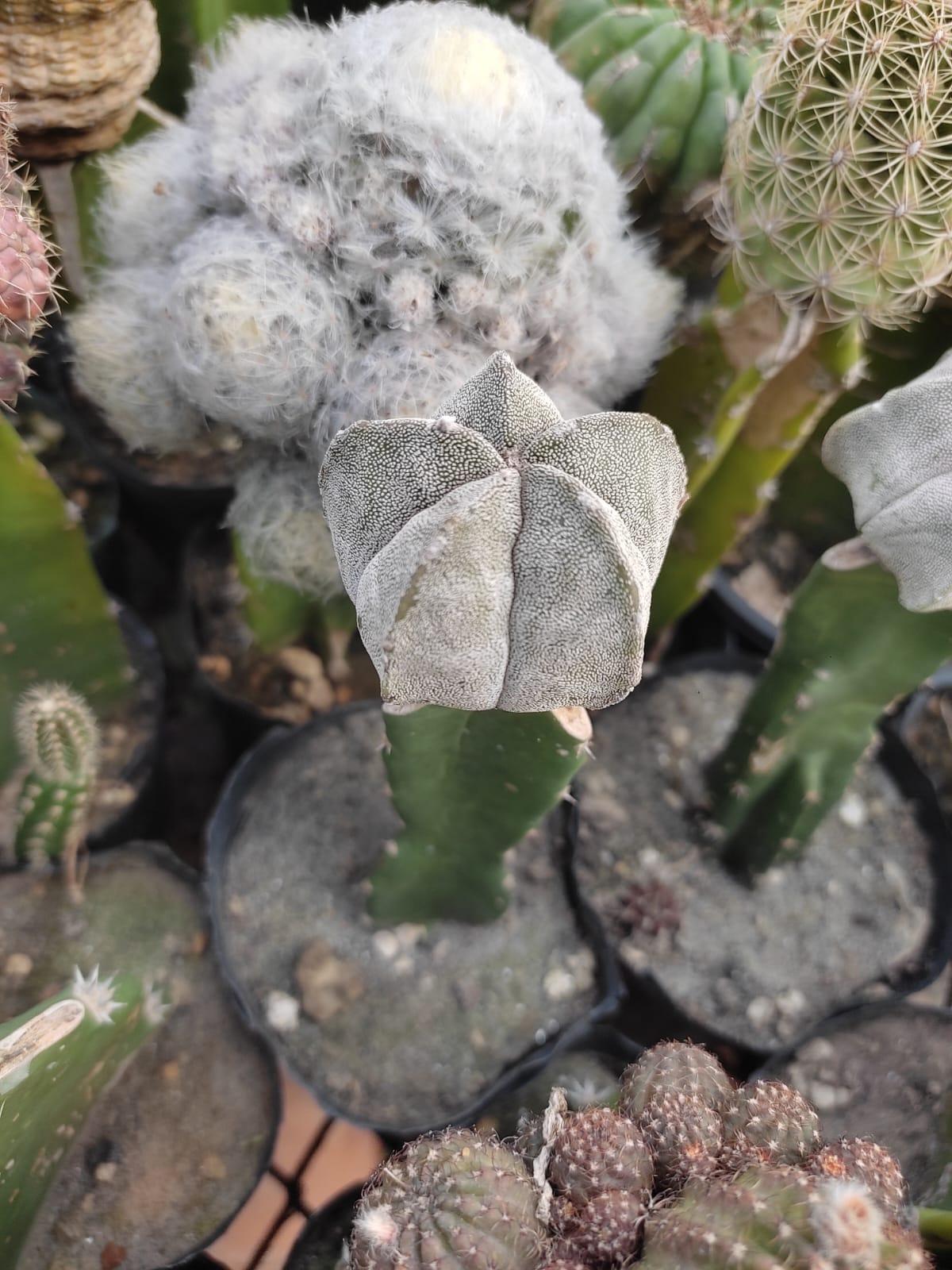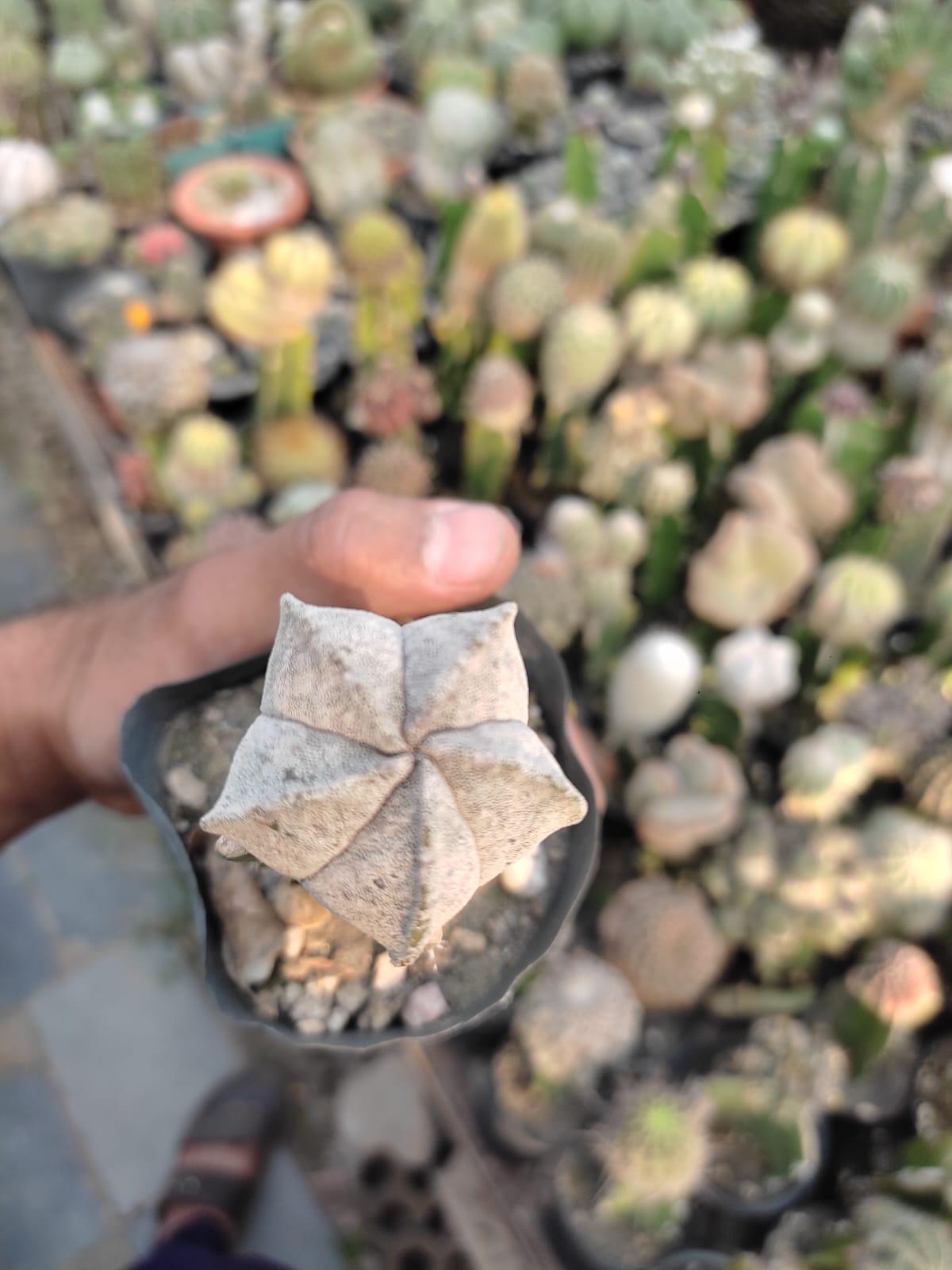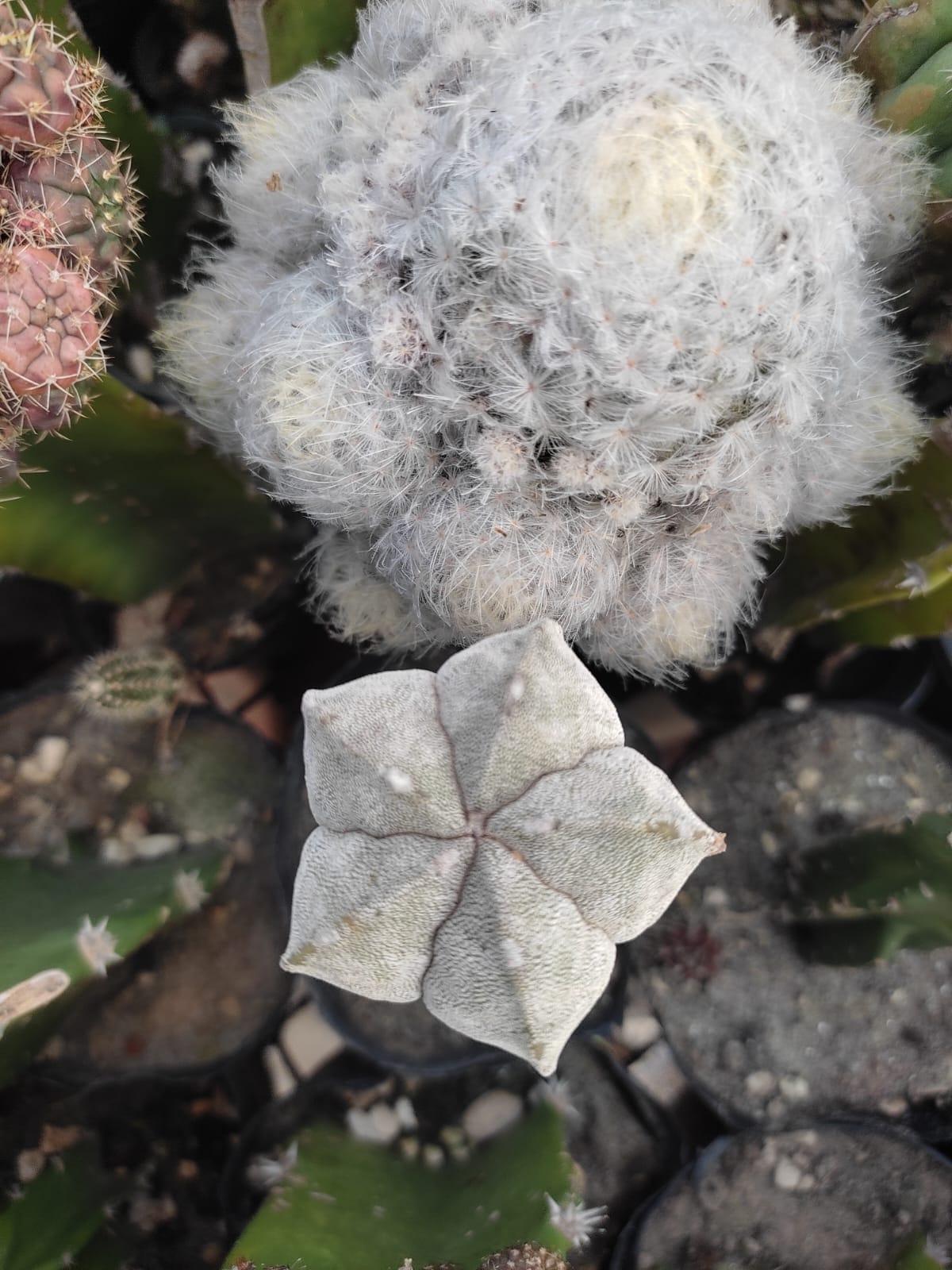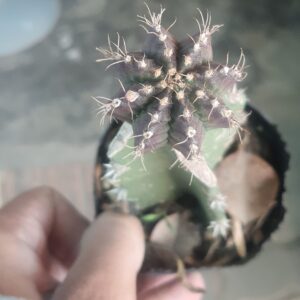Astrophytum Coahuilense: Star of the Cactus World
Astrophytum Coahuilense, also known as ‘False Peyote’, is a unique and fascinating cactus that captures the hearts of succulent enthusiasts and botanists. This remarkable plant is native to the arid regions of Coahuila, Mexico, and stands out for its striking appearance and fascinating adaptations to its harsh environment. In this comprehensive guide, we delve into the intricate details of Astrophytum Coahuilense, from its physical characteristics and natural habitat to growing and care.
Physical Characteristics
Astrophytum Coahuilense is known for its characteristic star-shaped shape that distinguishes it from other cactus species. This small, solitary cactus typically grows 5 to 20 cm tall and 5 to 15 cm in diameter. Its stem is round to cylindrical, often flattened at the top, and densely covered with white woolly trichomes that give it a matte appearance. These trichomes act as a defense mechanism against the scorching sun and the intense heat of its natural habitat.
The stem of Astrophytum Coahuilense is decorated with wonderfully symmetrical ribs, usually 5-8, which further enhance its star-shaped shape. Each rib is lined with visible areoles from which small tan spines sprout. These spikes are relatively soft and flexible, adding to the unique structure of the plant.
One of the most enchanting features of Astrophytum Coahuilense is its bright yellow flowers. These flowers, which usually appear in spring and summer, are funnel-shaped and can be up to 6 cm in diameter. The flowers emerge from the top of the cactus and contrast beautifully with its greenish-grey body, creating a stunning visual spectacle.
Natural habitat
Astrophytum Coahuilense is common in the semi-desert areas of Coahuila in northeastern Mexico. This harsh environment is characterized by extreme temperature fluctuations, low rainfall and nutrient-deficient rocky soil. Despite these difficult conditions, Astrophytum Coahuilense has developed several important adaptations that allow it to thrive.
In its natural habitat, this cactus often grows on limestone hills and rocky outcrops. The white trichomes on its surface reflect sunlight, reducing water loss and protecting the plant from strong sunlight. In addition, its ability to retain water in its succulent stem allows it to withstand long periods of drought.
Growing and Care
Growing Astrophytum Coahuilense can be a rewarding experience for both beginners and experienced gardeners. To grow this cactus successfully, it is necessary to mimic its natural habitat as closely as possible. Here are some important aspects of growing it:
1. Light Requirements
Astrophytum Coahuilense thrives in bright, indirect sunlight. Although it can tolerate full sun, shade is recommended during the hottest part of the day, especially in areas with strong sunlight. Indoor growers should place the cactus near a south or west window so it gets enough light.
2. Soil and Planting
A well-draining cactus mix is essential for the healthy growth of Astrophytum Coahuilense. You can create your own mix by combining equal parts coarse sand, perlite and potting soil. This mixture provides excellent drainage and prevents root rot, a common problem with cacti grown in poorly draining soil.
3. Watering
Astrophytum Coahuilense has a low water requirement and is very sensitive to overwatering. Allow the soil to dry completely between waterings and reduce the frequency of watering during the winter months when the cactus is dormant. When watering, make sure the soil is completely soaked and allow excess water to drain.
4. Temperature and Humidity
This cactus prefers warm temperatures between 20 and 30 °C (68 and 86 °F) during the growing season. It tolerates cooler temperatures down to 5 °C (41 °F) in winter, as long as the soil is kept dry. Astrophytum Coahuilense is well adapted to low humidity levels, making it an excellent choice for growing indoors.
5. Fertilization
Astrophytum Coahuilense benefits from occasional feeding during the growing season. Use a balanced, water-soluble cactus fertilizer diluted to half the recommended strength. Fertilize once a month from spring to early fall and avoid fertilizing during winter dormancy.
Propagation
Propagation of Astrophytum Coahuilense can be achieved by seeds or grafting. Growing from seed requires patience, as a cactus can take several years to mature. Sow the seeds in a well-draining cactus mix and store them in a warm, bright place. Germination can take several weeks to months.
Offsets, or offspring, are small clones that form in the roots of the mother plant. They can be carefully removed and transplanted into individual pots. Allow the cuttings to dry for a few days before planting to prevent rotting.
Conclusion
Astrophytum Coahuilense is an exciting and hardy cactus that offers a glimpse into the beauty and adaptability of desert flora. Its star-shaped shape, wool knit and bright yellow flowers make it a standout addition to any succulent collection. By understanding its natural habitat and providing proper care, you can enjoy the unique charm of Astrophytum Coahuilense for years. Whether you’re a seasoned cactus enthusiast or a beginner, this remarkable plant is sure to bring a touch of desert magic to your home or garden.
Checkout our variety of succulent plants here : https://boota.pk/succulent-plants/
To learn more about your favourite plants, check our YouTube channel : https://www.youtube.com/@boota4474







Reviews
There are no reviews yet.